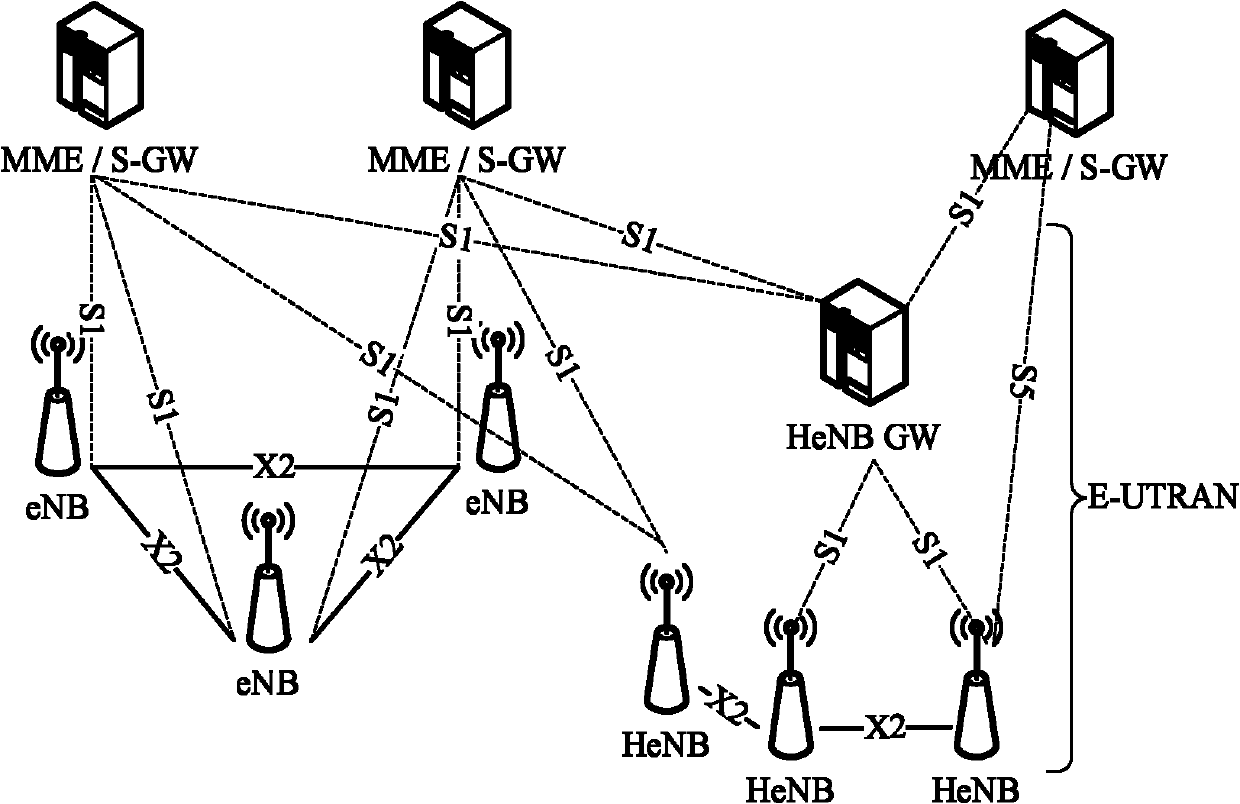Access network element, access network system and access method
An access network and access network technology, applied in the directions of network topology, access restriction, connection management, etc., can solve the problems of large overhead and delay, complex LTE home base station system architecture, etc., and reduce overhead and delay , the effect of simplifying the system architecture
- Summary
- Abstract
- Description
- Claims
- Application Information
AI Technical Summary
Problems solved by technology
Method used
Image
Examples
Embodiment 1
[0092] In order to reduce the complexity of the LTE network architecture and increase its flexibility, an effective method is to integrate the functions of multiple network elements and hand over some functions of the core network to the access network. The functions of the core network EPC mainly include user authentication, mobility management, data and signaling encryption, etc. Through these controls, user management and control and accurate charging operations are realized. Specifically, the above-mentioned EPC functions are mainly implemented by entities such as MME, S-GW, P-GW, and HSS. In the prior art, the specific functions of these core network elements are described as follows:
[0093] The functions of the Mobility Management Entity (MME) include:
[0094] (1) Service processing based on NAS signaling (signaling); (2) Security (encryption and integrity protection) protection for NAS signaling; (3) Reachability of UE in Idle state (including control and execution o...
Embodiment 2
[0143] Figure 11 It is a system architecture diagram of a home access network in which home base stations with (part or all) service gateway functions and (part or all) packet data gateway functions are deployed.
[0144] Such as Figure 11 As shown, the LTE home access network (HAN, or called LTE wireless local area network) is composed of home base stations (or called access points). An X2 interface is supported between home base stations, wherein the control plane supports an X2-C interface for interactive control plane signaling, and the user plane supports an X2-U interface for transmitting user data.
[0145] Figure 12 It is a logical architecture diagram of an LTE home access network system deployed with a home base station with a serving gateway function and a packet data gateway function.
[0146] Such as Figure 12 As shown, the home base station supports the S1 interface with the mobility management entity of the core network, the home base station (because it...
Embodiment 3
[0170] In order to reduce the complexity of the LTE network architecture and increase its flexibility, an effective method is to integrate the functions of multiple network elements and hand over some functions of the core network to the access network. Figure 16 It is a system architecture diagram of a home access network that deploys a home base station gateway with functions of a mobility management entity, a serving gateway, and a packet data gateway.
[0171] Such as Figure 16 As shown, the LTE home access network (HAN, or LTE wireless local area network) is composed of a femtocell gateway and one or more femtocells controlled by it. The home base station (HeNB) and the home base station gateway (HeGW) support the S1 interface, in which the control plane supports the S1-C or S1-MME interface, which is used for signaling on the interactive control plane, and the user plane supports the S1-U interface, which is used for Interactive business data. An X2 interface is supp...
PUM
 Login to View More
Login to View More Abstract
Description
Claims
Application Information
 Login to View More
Login to View More - R&D
- Intellectual Property
- Life Sciences
- Materials
- Tech Scout
- Unparalleled Data Quality
- Higher Quality Content
- 60% Fewer Hallucinations
Browse by: Latest US Patents, China's latest patents, Technical Efficacy Thesaurus, Application Domain, Technology Topic, Popular Technical Reports.
© 2025 PatSnap. All rights reserved.Legal|Privacy policy|Modern Slavery Act Transparency Statement|Sitemap|About US| Contact US: help@patsnap.com



